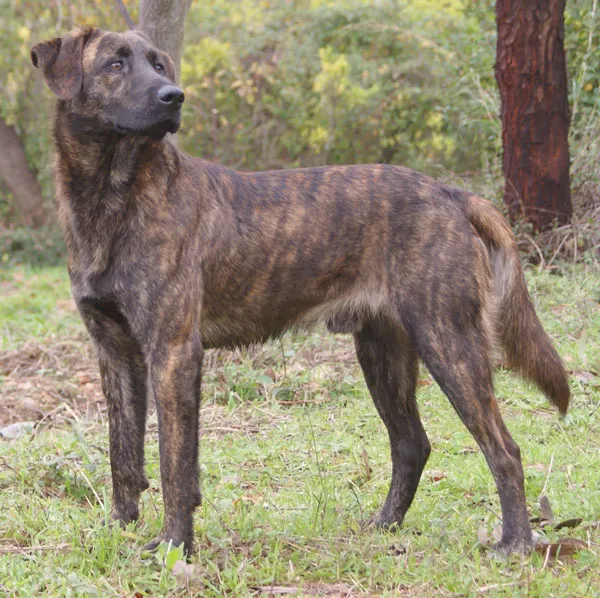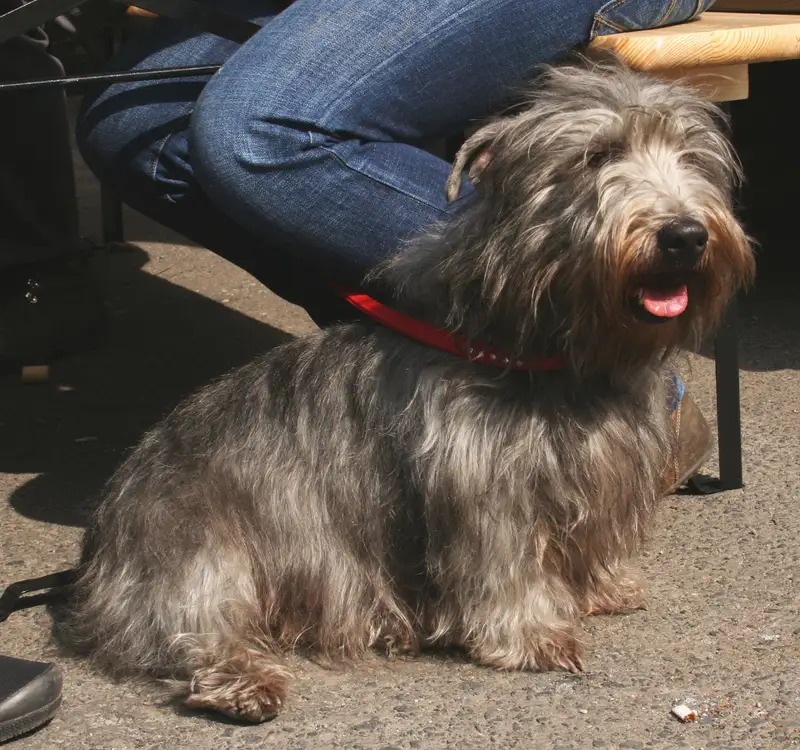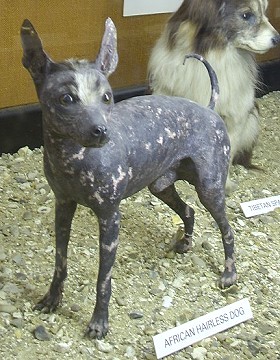Kuri
The Kuri, or Polynesian dog, is a historic breed known for its loyalty and hunting skills. Once a vital part of Māori culture, this breed requires regular exercise and socialization.
Overview
🐕Breed Overview
✨Key Traits
💡What Makes Kuri Special
The Kuri's most defining traits include its loyalty to family, strong hunting instincts, and adaptability to various environments. They are known for their keen sense of smell and ability to track scents, making them excellent companions for outdoor activities.
Their independent nature can sometimes lead to challenges in training, but with patience and positive reinforcement, they can excel in obedience and agility tasks. The Kuri's affectionate demeanor and protective instincts make them suitable for families, as they bond closely with children and other pets when properly socialized.
Their unique history as a Polynesian dog adds to their charm, making them a fascinating breed to own and cherish.
The Kuri, also known as the Polynesian dog, is a breed steeped in history and cultural significance. Introduced to New Zealand by Māori around 1280 AD, the Kuri was not only a beloved companion but also served practical purposes in hunting and clothing production. With a unique blend of independence and loyalty, the Kuri is known for its strong prey drive and adaptability to various environments.
Although the breed became extinct in New Zealand after European settlement, its legacy lives on through preserved specimens in museums. Potential owners should be aware of the Kuri's exercise needs, requiring at least 60 minutes of daily activity, and their preference for engaging tasks that stimulate their minds. Training a Kuri can be a rewarding experience, but it requires patience and consistency due to their independent nature.
With proper care, socialization, and training, the Kuri can be a loving and devoted family member, embodying the spirit of its rich heritage.
🎉Fun Facts
The Kuri was an essential part of Māori culture, used for food and clothing materials.
The last known Kuri specimens are preserved in a museum, highlighting their historical significance.
They were known for their hunting skills, particularly in tracking birds and small game.
Breed Characteristics
Family & Friends
Good Behavior
Get Up & Go
Household Harmony
Temperament & Personality
✨Key Traits
🐕Core Temperament
The Kuri possesses a balanced temperament characterized by loyalty, independence, and courage. They are protective of their family and can be wary of strangers, making them effective watchdogs.
Their strong prey drive means they may chase small animals, so supervision is essential during outdoor activities. Kuri dogs are generally good with children, especially if raised with them, and they can coexist peacefully with other pets when properly socialized.
Their intelligence and willingness to learn make them trainable, but they require consistent guidance to channel their energy positively. Overall, the Kuri's temperament makes them a loving and devoted family companion.
💫Personality Profile
The Kuri is known for its loyalty and independence, making it a devoted companion to its family. They are alert and courageous, often displaying a strong prey drive due to their historical use as hunting dogs.
While they can be reserved around strangers, they are affectionate and protective of their loved ones. Their intelligence allows them to learn quickly, but they may also exhibit stubbornness, requiring consistent training and socialization from a young age.
Overall, the Kuri is a versatile breed that thrives in active households where they can engage in physical and mental activities.
🔊Vocal Tendencies
The Kuri is generally a quiet breed, with a low tendency to bark. They may vocalize occasionally, particularly when alerting their owners to potential intruders or during play.
Their vocalizations are typically reserved for specific situations, such as greeting family members or expressing excitement. While they are not known for excessive barking, owners should be aware that their alertness can lead to occasional vocalizations, especially in unfamiliar environments.
Overall, the Kuri's noise level is manageable, making them suitable for various living situations.
Affection & Social Traits
Energy & Activity
Communication Style
Care Requirements
🏃♂️Exercise Requirements
Daily Exercise
The Kuri, a historical Polynesian dog breed, requires moderate exercise to maintain its physical and mental well-being. Ideally, an adult Kuri should engage in at least 60 minutes of exercise daily, which can be broken down into multiple sessions. Activities such as walking, running, and playing fetch are excellent for keeping them fit and stimulated.
Given their historical use as hunting companions, they thrive in environments where they can explore and engage in activities that mimic their natural instincts. Puppies should have shorter, more frequent play sessions, while senior dogs may require gentler activities to accommodate their energy levels and joint health. Regular exercise not only helps manage weight but also reduces the risk of behavioral issues stemming from boredom or pent-up energy.
Without sufficient exercise, a Kuri may exhibit destructive behaviors or anxiety, making it crucial for owners to prioritize their exercise needs.
Preferred Activities
🏠Living & Adaptability
Space Requirements
Kuri dogs thrive in environments where they have ample space to roam and explore. Ideally, they should have access to a secure yard or open area where they can engage in physical activities.
While they can adapt to apartment living, it is essential for owners to ensure they can provide sufficient exercise and mental stimulation through regular walks and playtime. The breed's size and energy level mean they can become restless in confined spaces, leading to potential behavioral issues.
Therefore, a home with a yard or proximity to parks is highly recommended to meet their needs.
Climate Preference
🍲Feeding Guide
Schedule
Food Types
Portion Size
Special Nutritional Needs
Kuri dogs do not have specific dietary restrictions, but it is essential to provide a balanced diet rich in protein and essential nutrients. Owners should monitor for any food allergies, as some Kuri may develop sensitivities. Regular vet check-ups can help identify any dietary needs or adjustments.
✨Grooming Requirements
Grooming Overview
The Kuri has a short, dense coat that requires minimal grooming. Regular brushing, at least once a week, helps keep their coat clean and free of mats.
During shedding seasons, more frequent brushing may be necessary to manage loose hair. Bathing should be done as needed, depending on how dirty the dog gets.
Routine checks of the ears for wax buildup and infections are essential, as well as regular nail trimming to maintain proper foot health. Overall, the Kuri's grooming needs are relatively low, making them suitable for owners who prefer a low-maintenance breed.
Care Schedule
Brush weekly; bathe as needed; trim nails every 2-4 weeks.
Health Profile
⚕️Health Care
Regular veterinary care is vital for the Kuri's longevity. Routine check-ups, vaccinations, and preventive treatments can help identify health issues early and maintain optimal health.
Owners should also be proactive in monitoring their dog's weight, diet, and exercise levels, as obesity can lead to various health problems. By prioritizing health care throughout different life stages, owners can significantly enhance their Kuri's quality of life and lifespan.
Health Issues Overview
⏳Average Lifespan
Genetic Factors
Genetics play a crucial role in the Kuri's lifespan, with hereditary health issues such as hypothyroidism and entropion being notable concerns. Responsible breeding practices that prioritize genetic diversity can help mitigate these risks.
Potential owners should seek reputable breeders who conduct health screenings and provide transparency regarding the lineage of their dogs. Understanding the genetic background of a Kuri can aid in anticipating potential health issues and ensuring a healthier life for the dog.
Living Conditions
The Kuri's lifespan can be influenced by various environmental factors, including housing conditions, climate, and social interactions. A stable and loving home environment, along with regular exercise and mental stimulation, can promote longevity.
Exposure to harsh weather conditions without adequate shelter can negatively impact their health. Additionally, social interactions with humans and other pets can enhance their emotional well-being, contributing to a longer, happier life.
🏥Common Health Issues
Hypothyroidism
Warning Signs
🔬Diagnosis
Blood tests to measure thyroid hormone levels.
💊Treatment
Thyroid hormone replacement therapy.
📝Management Tips
Daily thyroid medication can manage this condition effectively, ensuring a healthy life.
Entropion
Warning Signs
🔬Diagnosis
Veterinary examination of the eyes.
💊Treatment
Surgery to correct eyelid position.
📝Management Tips
Surgical correction is necessary to prevent discomfort and vision loss.
🛡️Preventive Care
🔬Thyroid Function Test
A blood test to evaluate thyroid hormone levels, crucial for diagnosing hypothyroidism.
📅 Annually, or more frequently if symptoms arise.
🔬Ophthalmic Examination
An eye examination to check for entropion and other ocular issues, ensuring early detection and treatment.
📅 Every 1-2 years, or as recommended by a veterinarian.
Training
🧠Intelligence & Trainability
💪Work Drive
The Kuri has a moderate work drive, stemming from its historical role as a hunting companion. They thrive when given tasks that engage their natural instincts, such as tracking or retrieving.
Providing them with jobs, like participating in dog sports or engaging in scent work, can help fulfill their need for mental stimulation. Without adequate engagement, a Kuri may become bored and exhibit undesirable behaviors, so it's essential to incorporate regular activities that challenge their minds and bodies.
⚠️Training Considerations
Training a Kuri can present some challenges, primarily due to their independent nature and strong instincts. They may exhibit stubbornness, making consistent and positive reinforcement training essential.
Early socialization is crucial to prevent potential behavioral issues, such as wariness of strangers or dominance struggles with other dogs. Owners should be patient and persistent, using rewards-based training methods to encourage desired behaviors.
Engaging them in mentally stimulating activities can also help mitigate any behavioral challenges, as a bored Kuri may resort to destructive behaviors.
📝Training Tips
To effectively train a Kuri, owners should focus on positive reinforcement techniques, rewarding good behavior with treats, praise, or playtime. Consistency is key; commands should be clear and practiced regularly.
Socialization with various people, environments, and other animals from a young age will help the Kuri develop into a well-rounded adult dog. Incorporating fun activities, such as agility training or scent work, can keep the Kuri engaged and motivated during training sessions.
Owners should also be prepared for some headstrong moments and remain calm and assertive to establish leadership without resorting to harsh methods.
History & Heritage
📜Origin Story
The Kuri, known as the Polynesian dog, was introduced to New Zealand by Māori during their migrations from East Polynesia around 1280 AD. These early settlers brought their dogs for companionship and assistance in hunting, which was crucial for their survival in the new land. The Kuri adapted to the diverse environments of New Zealand, becoming integral to Māori life.
They were not only valued as hunting partners but also as sources of food and materials for clothing and tools. The Kuri's significance in Māori culture is reflected in various traditional practices, including the crafting of kahu kuri cloaks from their skins. Sadly, the breed's decline began with the arrival of European settlers, who brought different dog breeds and altered the ecological landscape.
By the early 20th century, the Kuri had become extinct in New Zealand, with the last known specimens preserved in a museum, marking the end of a unique chapter in the history of dogs in the region.
⏳Development History
The Kuri's development can be traced back to the early Polynesian settlers who brought their dogs with them to New Zealand. These dogs were likely bred for their utility in hunting and companionship, adapting to the unique environment of New Zealand.
Over time, the Kuri became a vital part of Māori culture, serving multiple roles in daily life. However, with the arrival of European settlers and their own dog breeds, the Kuri faced competition and decline.
By the late 19th century, the breed had largely disappeared, with the last known specimens preserved in the Museum of New Zealand Te Papa Tongarewa. The Kuri's extinction serves as a poignant reminder of the impact of colonization on indigenous species and cultures.
🛡️Purpose & Historical Role
Historically, the Kuri served multiple purposes within Māori society. Primarily, they were used as hunting dogs, assisting in the capture of birds and other small game.
Their meat was consumed, and their skins were utilized to create clothing and ceremonial items. The Kuri also played a role in cultural practices, being featured in stories and traditions passed down through generations.
Their extinction represents a significant loss not only for biodiversity but also for the cultural heritage of the Māori people.
🏺Cultural Significance
The Kuri holds significant cultural importance in Māori history and tradition. Introduced to New Zealand by Māori during their migrations from East Polynesia around 1280 AD, the Kuri was not only a companion but also served practical purposes.
They were utilized as a food source, and their skins were crafted into cloaks known as kahu kuri, belts, and decorative items for weapons and poi. The Kuri's role in Māori society reflects the deep connection between the breed and the cultural practices of the Māori people, making it an integral part of their heritage.
Unfortunately, the breed became extinct in New Zealand following the arrival of European settlers, marking a significant loss in both biodiversity and cultural history.
Conservation Status
This breed is extinct and no longer exists in its original form.









